We meet the Duke of Argyll at his home Inveraray Castle on the shore of Loch Fyne
MORE FROM SCOTLAND MAGAZINE
Torquhil Ian Campbell, 13th (Peerage of Scotland) and 6th (Peerage of UK) Duke of Argyll holds so many ancestral titles and historic offices that it sometimes becomes confusing to know what they could all possibly mean in the 21st century.
Among them, for example, he is Master of the Royal Household in Scotland, Admiral of the Western Coasts and Argyll, and he is the Hereditary Keeper of the Royal Castles of Carrick, Dunoon, Dunstaffnage and Tarbert.
However, at Inveraray Castle, his spectacular turreted castle on Loch Fyne in Argyll, there is only one honour that matters to him: MacCailean Mór, ‘Son of the Great Colin’ a dignity acquired from his ancestor, the mighty Sir Colin Campbell of Lochow, who was knighted by King Alexander III of Scotland in 1280. “MacCailean Mór is a blood title, not a hereditary title,” he explains. “It means my genetics are mine and mine alone. It is who I am.”
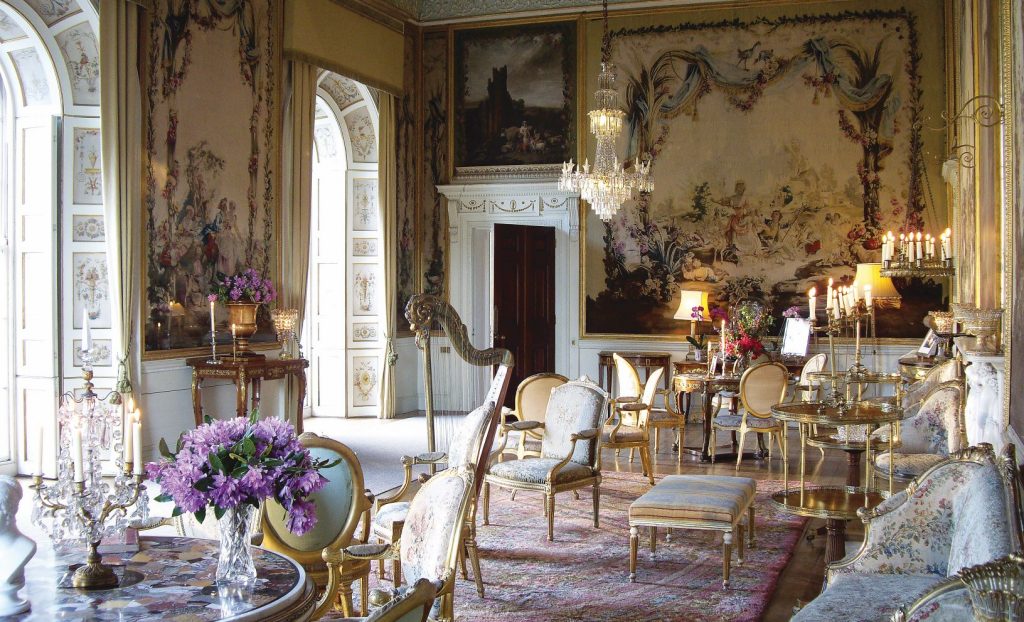
And it is as MacCailean Mór that he presides over the global network of Clan Campbell societies. “There are many millions of Campbells scattered throughout North America and Canada, Australia and New Zealand, and Inveraray is their spiritual home,” he says emphatically. More recently, of course, the draw of Inveraray Castle has mushroomed to an even wider audience, not least after it briefly appeared as Duneagle Castle in the 2012 Christmas episode of the popular British television drama series, Downton Abbey.
Visitor numbers in 2019 exceeded 125,000, double the volume when the Duke took over in 2001. “Fortunately, my father left everything in very good order, and we’ve been able to build on it since,” he reflects. To start off with, the Duke and his wife, the Duchess Eleanor, whom he married in 2002, have installed biomass and hydropower on the estate. Up until recently, the Duchess ran the Best of the West Festival. She has now taken over as Chair of the Historic Houses Association. During the school holidays, their children, the Marquis of Lorne (15), Lord Rory (14) and Lady Charlotte (11), all take part in the daily theatre of this great historic building that is open to the public for seven months of the year.
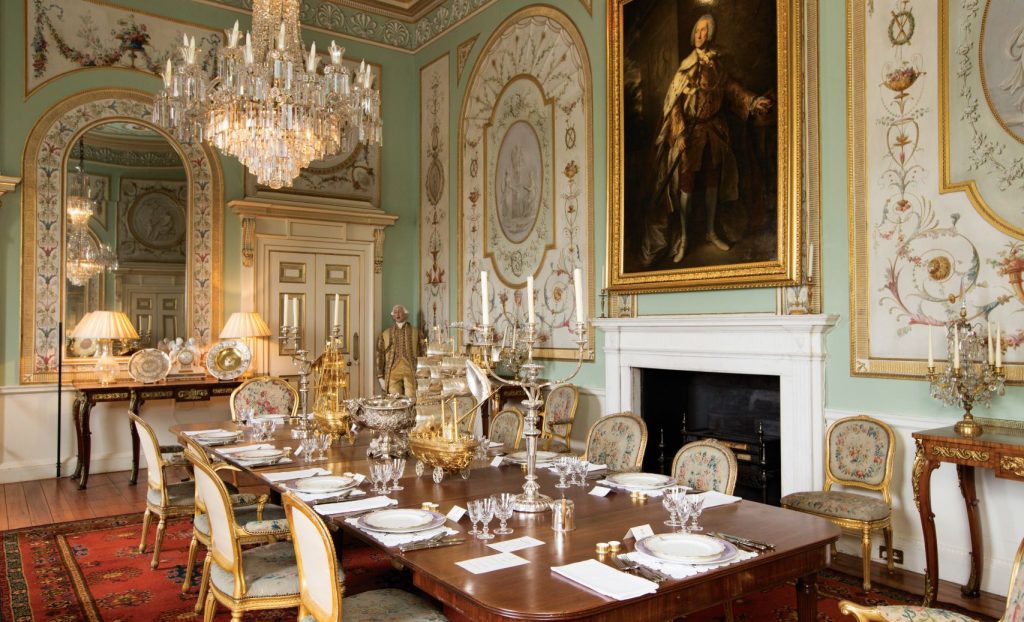
The Campbell Archive, a magnet for overseas Clan visitors, has been transferred to a dedicated estate office. New guide apps have been introduced and Mandarin has recently been added to the languages available on information cards. Clan Campbell rose to prominence on the west coast of Scotland as the power of the scions of Clan MacDougall and the MacDonald Lords of the Isles declined. In the early 14th century, Sir Neil Campbell married Mary Bruce, sister of Robert the Bruce, and in the 15th century, the romantic but impractically situated Innis Chonnel Castle, on an islet in Loch Awe, was abandoned as the family seat in favour of a site at Inveraray on Loch Fyne.
Like all great Scottish ancestral homes, Inveraray Castle reflects a variety of styles introduced by succeeding generations. Most of the present-day building was completed for the 5th Duke in 1773, when the entire old town of Inveraray was replaced by a model new town on the loch foreshore.
To achieve this, the original plans for the castle and town, which had been drawn up earlier by the English architect Sir John Vanbrugh, were adapted by the Palladian exponent Roger Morris. The project was overseen by William Adam, and William’s sons, James and Robert, completed his work at Inveraray after his death in 1748. Robert Mylne, the master mason responsible for many of Scotland’s great houses, was assigned to recast the castle interiors during the 1780s.
A fire destroyed the upper floors a century later and Anthony Salvin, the Victorian castle expert, was brought in to advise on what to do. It was he who suggested the conical roofs on the exterior corner towers and re-designed the central tower as the Armoury Hall that can be seen today. Earlier, in 1871, the 8th Duke of Argyll’s heir, the Marquis of Lorne, had married Princess Louise, Queen Victoria’s fourth daughter, and to mark the occasion, the engineer Matthew Digby Wyatt was invited to design an elaborate glass and iron entrance bridge.
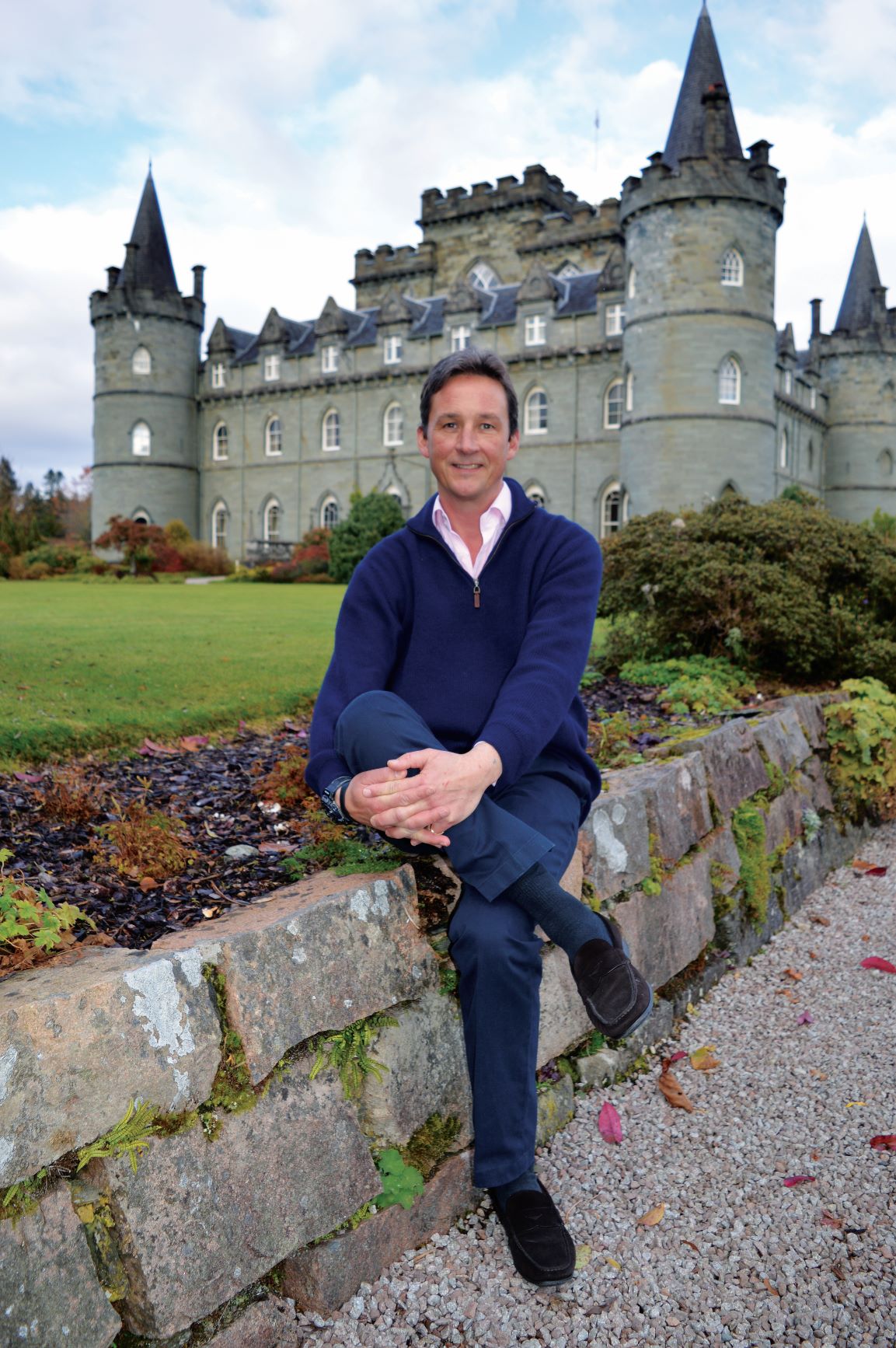
Ravaged once more by a fire in 1975, the castle was again renovated. Extensive scaffolding was employed in the
restoration of the central towers and the entire house re-lined, re-pointed, plastered and painted in the authentic 18th-century manner.
Among the portraits featured in the Entrance Hall are John, 2nd Duke of Argyll, by Sir Godfrey Kneller and his daughter Anne and her husband, the Earl of Strafford, by Sir Joshua Reynolds. Also featured are cannon balls retrieved from Tobermory Bay where The Florencia, a galleon, belonging to the Spanish Armada, sank in 1588.
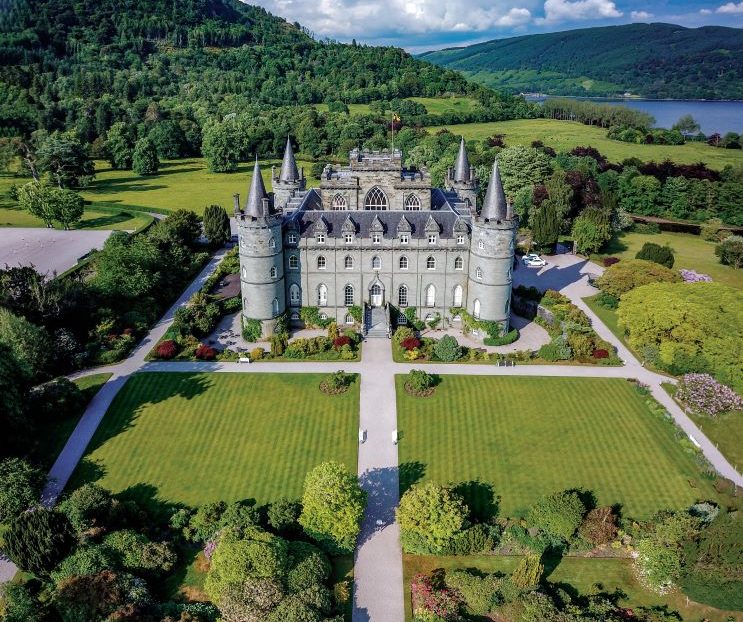
The splendid Armoury Hall, soaring 21 metres in height, features the Campbell family crest on the ceiling with those of cadet branches on either side. On the walls are elaborate patterns of arms including 16th and 17th-century polearms, roundels of muskets and spandrels of Lochaber axes recalling a more violent age. In a showcase can be seen a dirk and sporran that once belonged to the 17th-century folk hero Rob Roy MacGregor.
In the State Dining Room, with its ceiling decoration cast in London by John Papworth, and cornice and frieze by Scottish plasterer John Clayton, the elaborately decorated walls are the work of two French painters Girard and Guinard. The tapestry dining chairs with gilding by the French craftsman Dupasquier, and the original Beauvais tapestry, were commissioned by the 5th Duke on a visit to France during the 1780s.
The dining table by Gillows of Lancaster dates from c.1800, the elaborate ormolu-mounted sideboards from the late 18th century, and the Waterford chandelier (three smaller Waterford chandeliers hang in the Tapestry Drawing Room) is c.1830. Decorated in the 1780s Parisian style, the Tapestry Drawing Room retains an original set of Beauvais tapestries with architectural decoration provided by Girard. The original ceiling was designed by Robert Adam. A circular giltwood palm tree table features a marble top inlaid with the coat of arms of the 7th Duke. A painting by John Hoppner of Lady Charlotte Campbell, daughter of the 5th Duke, as Aurora, the mythical goddess of dawn, gazes down from above the fireplace.
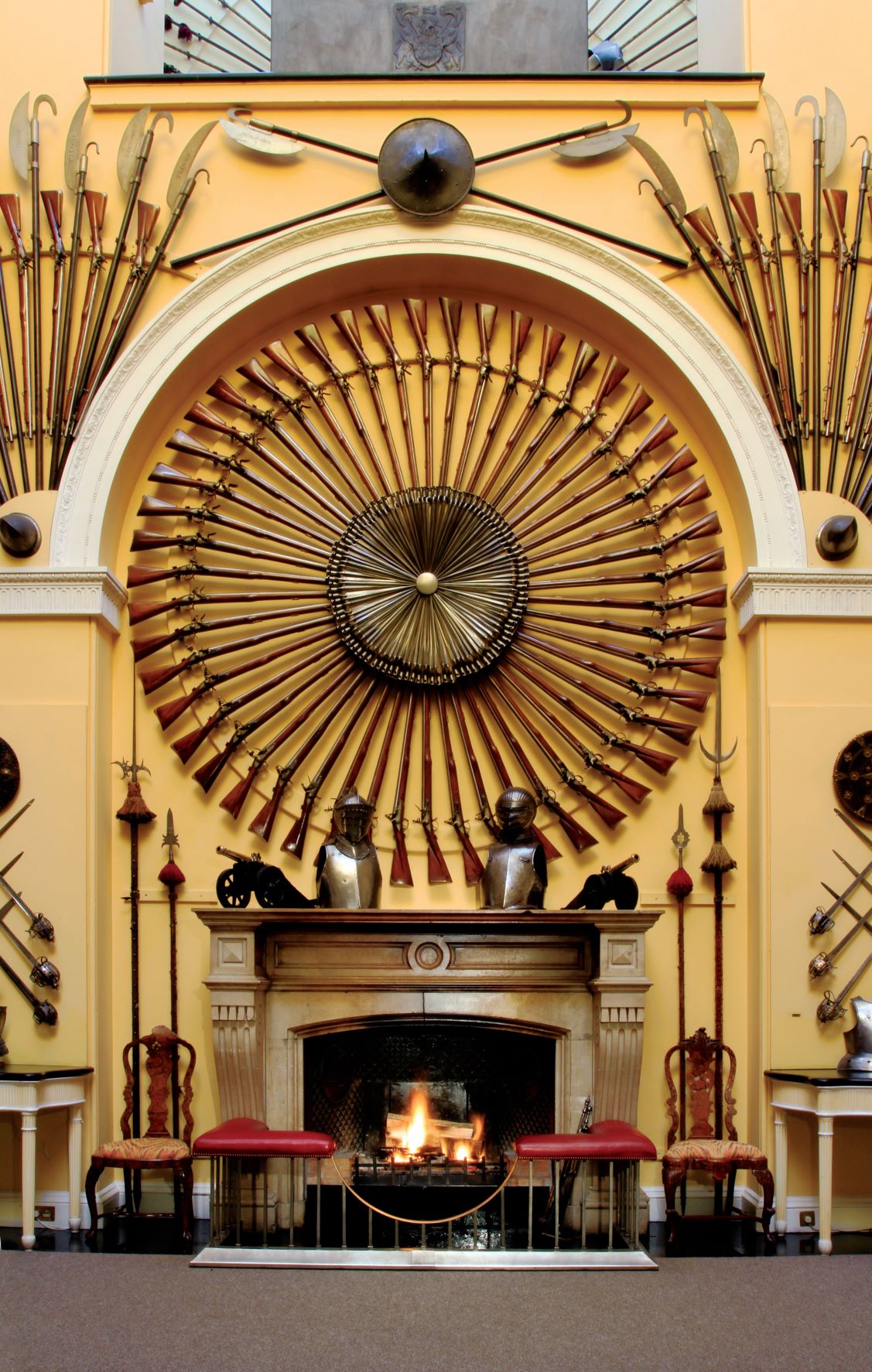
Hidden behind a pair of tapestry-covered double doors is the China Turret, which houses a fine collection of Oriental and European porcelain. Family portraits in The Saloon include a Thomas Gainsborough of Field Marshall Henry Seymour Conway, son-in- law of the 4th Duke, and Pompeo Batoni’s towering image of the 8th Duke of Hamilton, the 5th Duke’s stepson.
On the landing of the North West Hall and staircase is a showcase displaying various ceremonial robes and uniforms worn by dukes and duchesses over time: the Coronation robes of HRH Princess Louise, the robes of the Knight of the Thistle, and the wedding dress of Duchess Eleanor.
All visits to Inveraray Castle, culminate in the splendidly restored Castle Kitchen, with its seven fireplaces and copper utensils, providing a fascinating insight into the lifestyles of both the residents and staff who lived and worked here in the Victorian and Edwardian eras. Incidentally, the locally produced light meals and cakes in the castle tearoom, run by the Duchess, are highly recommended.
Inveraray castle is open to visitors between April and October each year. www.inveraray-castle.com
Read more:
MORE FROM SCOTLAND MAGAZINE

SCOTLAND MAGAZINE
Published six times a year, every issue of Scotland showcases its stunning landscapes and natural beauty, and delves deep into Scottish history. From mysterious clans and famous Scots (both past and present), to the hidden histories of the country’s greatest castles and houses, Scotland‘s pages brim with the soul and secrets of the country.
Scotland magazine captures the spirit of this wild and wonderful nation, explores its history and heritage and recommends great places to visit, so you feel at home here, wherever you are in the world.